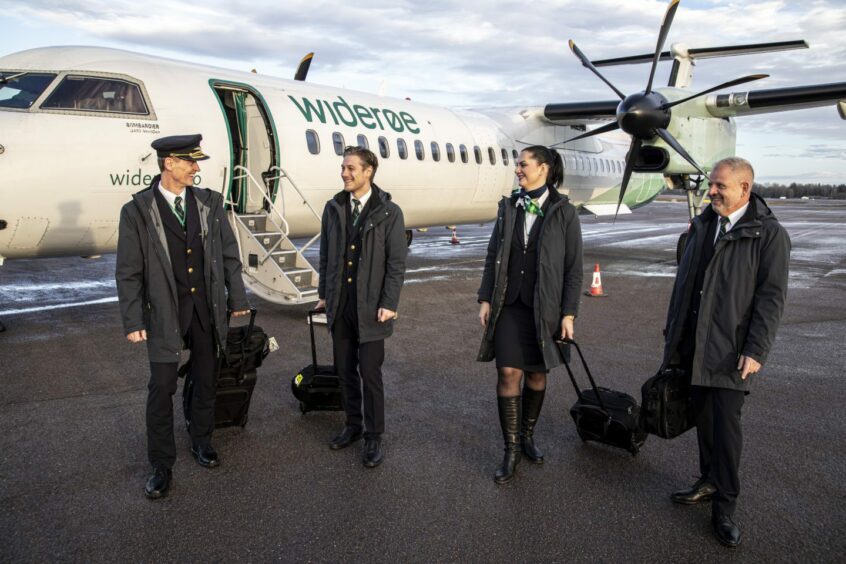
The distinctive green and white livery of Norwegian airline Widerøe is a familiar sight for anyone working in North Sea offshore oil and gas.
The largest domestic airline in Norway, Widerøe has been connecting Aberdeen – the primary UK centre supporting activity in the North Sea – for some 20 years, with flights to Stavanger and Bergen.
In 2021 the airline also added a daily flight from London Heathrow to Bergen.
Why Bergen is the best transfer point for travel in Norway
The airline is proud to have developed Bergen as a major hub at which industry professionals and others can connect with a wide range of domestic routes across Norway, including those serving key industry centres, such as Haugesund and Hammerfest.
Haakon Overvaag, Director of Business-to-Business sales, explains: “Many of our routes are customised to accommodate the industry’s need for flexible, efficient transport, and we are known for flying passengers as far as a plane can take them.”
With daily flights to and from both Aberdeen and London Heathrow, Wideroe’s Bergen hub offers connections to more than 40 onward destinations in Norway, with the major western and northern cities of Stavanger, Haugesund, Kristiansund, Trondheim and Tromsø served by frequent daily services.
There are eight daily returns to Stavanger, five to Haugesund and Kristiansund, and four to each of Trondheim and Tromsø.
Among onward connections via Trondheim are Brønnøysund and Sandnessjøen, while Bodø offers connections to the Lofoten Islands and Vesterålen, and you can reach Hammerfest by connecting at Tromsø.
Bergen is great for a city break
Of course, the story of Bergen is about far more than just oil and gas: besides the World Heritage Site status of the city’s magnificent Hanseatic port, with its distinctive tall wooden warehouse buildings, Bergen is also one of just a handful of UNESCO Cities of Gastronomy.
This UNESCO classification was won in late 2015, under the umbrella of its Creative Cities Network.
In order to join the network, Bergen had to demonstrate a vibrant and well-developed locally based gastronomy, steeped in traditional methods and food sources.
The city itself, and its subsidiary settlements, are woven in and around seven mountains, which provide easy access to the wild and inspiring countryside in a few minutes, some of them being connected to the city centre by cable car or funicular railway.
Some of the most dramatic of Norway’s famed fjords are easily accessed by sea, road or, indeed, a short hop by Widerøe flight.
Working for a Zero Emission future
The airline is also focused sharply on addressing the challenges posed by the need to reduce or eliminate carbon emissions.
Its Widerøe Zero initiative has been established to help realise the airline’s ambition to be among the first emissions-free operators in the world.
Widerøe Zero is working in partnership with industry leaders, such as Rolls Royce and Italian manufacturer Tecnam, to get a modestly sized battery-powered aircraft in commercial service within a few years.
The aim is to see large parts of the domestic fleet electrified by 2030, while Widerøe Zero CEO Andreas Ask says passengers could be boarding electric aircraft as soon as three years from now.
Widerøe’s services to Aberdeen and London are today operated respectively by the 78-seat Dash-8 Q400 turboprop aircraft and 110-seat Embraer E-190 E2 jets.